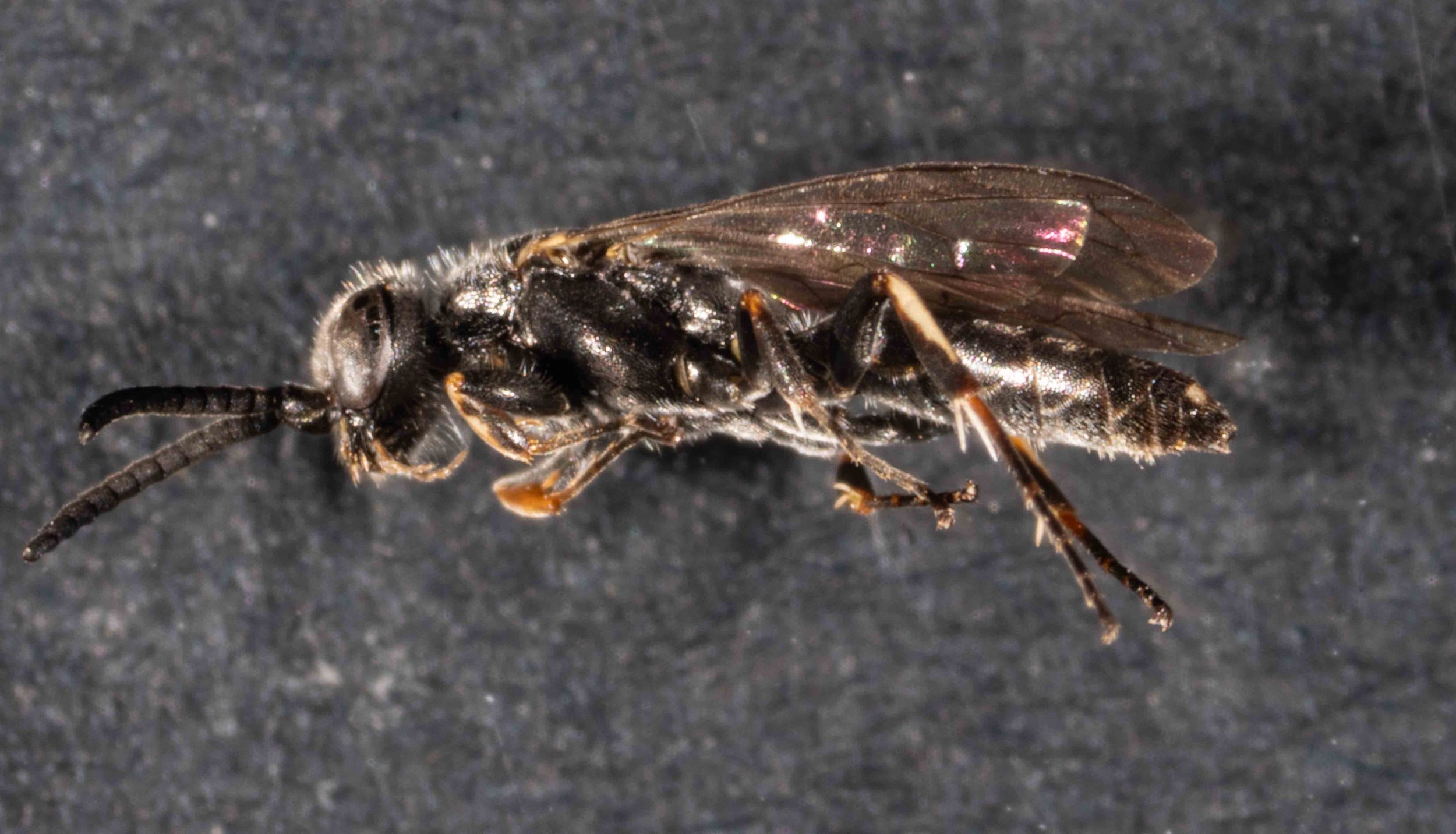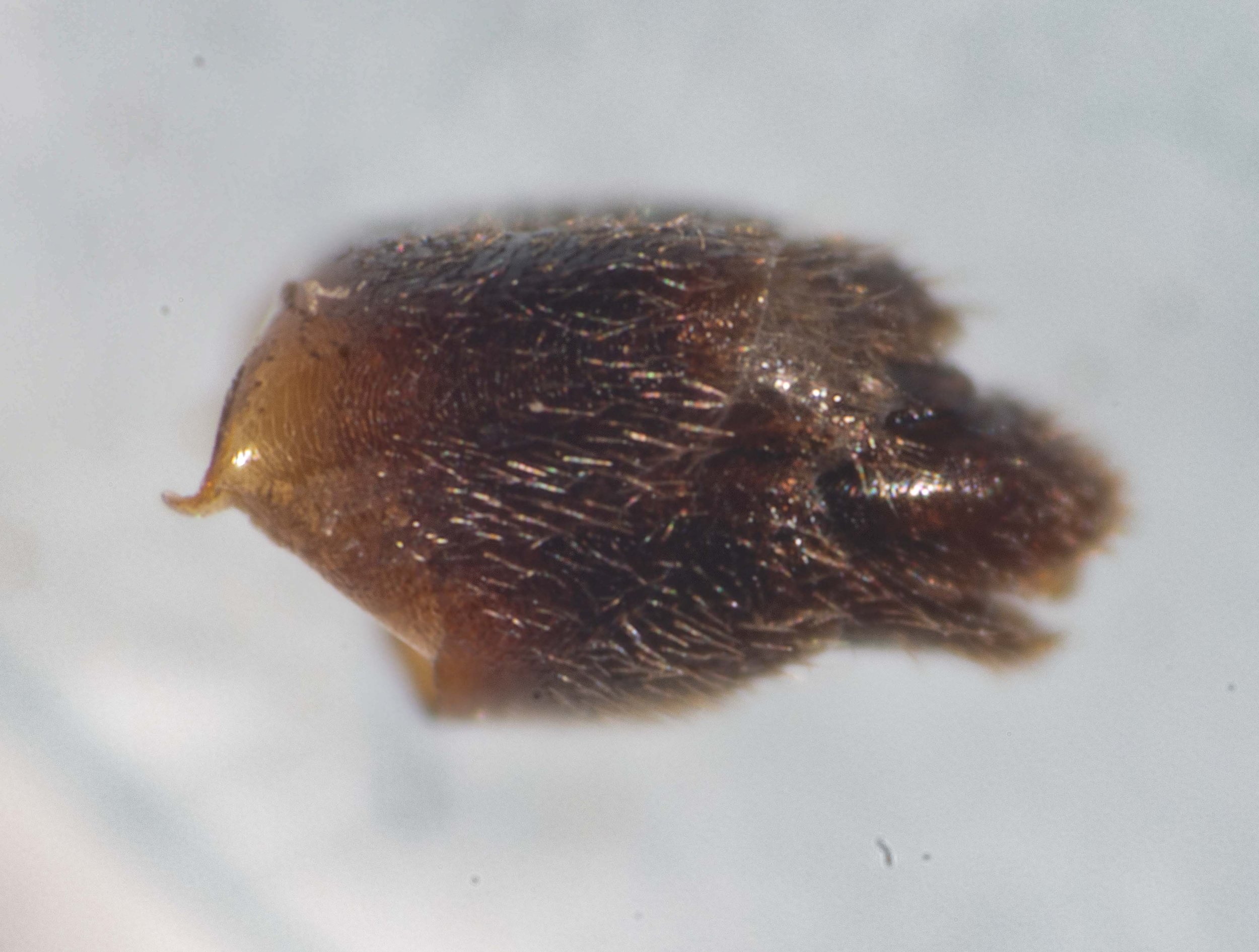2301J

Workbook
Found resting on grass seed 21st Jan 2023. Quite docile in the cool of early morning. Collected and stored dry. Note that this appears identical to wasp #2302C.
(imaged entire 11/3/24)
Dissection of terminalia
(all dissection images taken 17/3/24)
Step 1: Terminalia removed at junction of T5-6/S5-6.
Of particular note:
parameres project well beyond T7 and slightly beyond S8. However, this may be an result of pressure applied when I cut away the terminalia.
strongly sclerotised, dorsal volsellar plates also project beyond T7
S8 with simple, rounded apex (no spines or carinae)
latero-apical pale patches of T7 concealed by T6, but this too may be an artefact of the dissection. In the intact insect, the apical half of T7 (including the patches) is visible.
Step 2: T6 removed.
Of particular note:
T7 strongly convex
T7 densely setose across apical half, and with large, pale spots laterally
Step 3: T7 (epipygium) removed.
Of particular note:
T7 with thin apical membrane and no apparent carinae
T7 apex slightly concave either side of mid-apical point
Step 4: S7-8 removed.
Of particular note:
S8 with simple, rounded apex– no spines or lobes. Although there are no carinae, the edge is slightly thickened where it wraps dorsally.
S8 evenly setose
Dorsally, a pair of large plates, flanking a midline gap which widens apically.. These plates seem to arise from the base of the basal ring. They are thickened apically and form an expanded plate, with a short projection medially. I have labelled them as volsellae (V).
Basal ring not visible dorsally. The opening is strongly directed ventrally.
Step 5: phallus dissected
This was a rough job, due to the small size. By squeezing (and a bit of tearing) in the basal region, I removed the basal ring. It was quite soft and not large. Then I teased away the structures on the LEFT side (BP, P & V). The aedeagus remained attached to the RIGHT hand side.
Of particular note:
Parameres with broad concave apex, wrapping medially.
Complex series of volsellar plates, with apparent grasping elements.
The base of the most dorsal volsellar plate is quite thin and smooth, as is the basiparamere. It may be that the former is actually part of the basiparamere, albeit completely divided laterally.
Simple shape of the aedeagus, with no terminal filament.
This is a workbook page … a part of our website where we record the observations and references used in making species identifications. The notes will not necessarily be complete. They are a record for our own use, but we are happy to share this information with others.



































